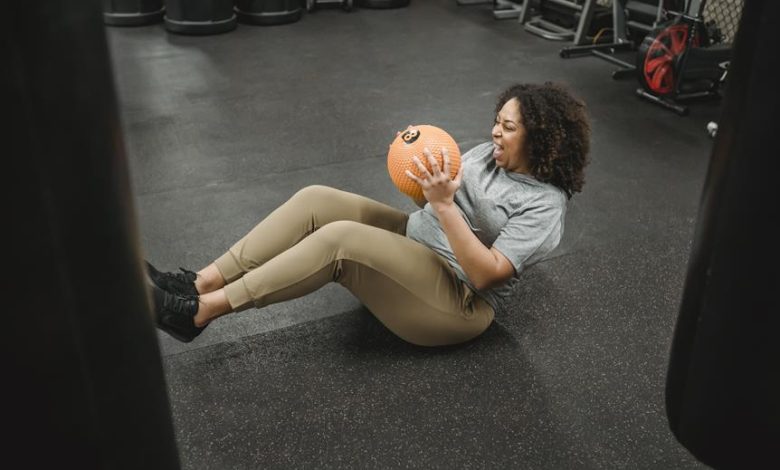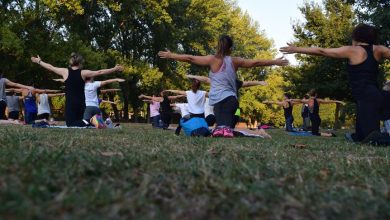Unleash Your Workout Potential With Consistent Intensity

Get ready to take your workouts to new heights and unleash your full potential! Like a roaring engine, consistent intensity is the fuel that will power you towards your fitness goals. In this article, we'll show you how embracing different workout days can lead to incredible progress. Whether you're feeling great or facing challenges, every effort you put in contributes to your overall success. So, let's dive in and discover the power of consistent intensity in achieving your health and fitness dreams.
Key Takeaways
- Consistency is key for successful workouts
- Training with intensity is important regardless of how you feel
- Small incremental changes on average days lay the foundation for success
- Maximizing intensity on each set guarantees a successful workout
The Importance of Consistency in Your Workouts
Consistency is crucial in maximizing the effectiveness of your workouts. Building a workout routine and tracking your progress are two important aspects of maintaining consistency. When you have a structured routine in place, it becomes easier to stick to your workouts and make them a regular part of your life. By tracking your progress, you can see how far you've come and make adjustments to your routine as needed. Progress tracking allows you to set specific goals and work towards them, ensuring that you continue to challenge yourself and make progress over time. Without consistency and progress tracking, it can be difficult to stay on track and see the results you desire. So, make it a priority to build a workout routine and track your progress to maximize the effectiveness of your workouts.
Training With Intensity: Why It Matters
To maximize the effectiveness of your workouts, it is important to understand why training with intensity matters. Training with intensity not only helps you achieve your fitness goals faster, but it also prevents injuries during intense workouts. By pushing your limits and challenging yourself, you stimulate muscle growth and improve your overall strength and endurance. However, it is crucial to balance intensity with recovery for optimal results. Pushing yourself too hard without proper rest can lead to overtraining and increased risk of injury. On the other hand, not pushing yourself enough can limit your progress. Finding the right balance between intensity and recovery ensures that you make consistent progress while minimizing the risk of injury.
| Benefits of Training with Intensity | |
|---|---|
| 1. Stimulates muscle growth and improves strength | |
| 2. Enhances endurance and cardiovascular fitness | |
| 3. Accelerates calorie burn and aids in weight loss | |
| 4. Boosts metabolism and improves overall fitness |
Incorporating intensity into your workouts is essential for achieving your fitness goals and maximizing your workout potential. By training with intensity, you challenge your body to adapt and improve, leading to significant progress over time. Remember to listen to your body and adjust the intensity based on how you feel. Consistently pushing yourself without overdoing it will help you achieve the best results while preventing injuries. So, embrace the intensity and make the most out of every workout session.
Measuring Intensity: RPE and RIR Explained
You can measure the intensity of your workouts using two methods: Rate of Perceived Exertion (RPE) and Reps in Reserve (RIR). RPE is a subjective measure that takes into account factors impacting your training, such as fatigue or stress. It ranges from 1-10, with 10 being the highest intensity. To track RPE accurately, focus on how the exercise was performed rather than how you feel. Efficient movement and muscle activation indicate higher intensity. On the other hand, RIR is a measure of how many reps you could have done after a set. It is useful when time is limited for workouts. To track RIR accurately, aim to stop sets with 1 or 2 reps in reserve. Utilizing RPE and RIR for optimal workout performance ensures that you are pushing yourself enough without risking injury.
Understanding Rate of Perceived Exertion (RPE)
By understanding Rate of Perceived Exertion (RPE), you can accurately gauge the intensity of your workouts. RPE takes into account factors impacting your training, such as fatigue or stress, and helps make the most of each set. It is measured on a scale from 1-10, with 10 being the highest intensity. Focus on how the exercise was performed rather than how you feel, as efficient movement and muscle activation indicate higher intensity. Incorporating a 2 column and 4 row table can help visualize the RPE scale:
| RPE Scale | Intensity Level |
|---|---|
| 1-3 | Low intensity |
| 4-6 | Moderate intensity |
| 7-9 | High intensity |
| 10 | Maximum intensity |
Understanding RPE allows you to measure and adjust the intensity of your workouts to maximize exercise performance and achieve your health and fitness goals. It also helps prevent training to failure too often, reducing the risk of injury. By maximizing workout effectiveness through RPE, you can make incremental changes, leading to potential expansion, positive body changes, and strength and endurance gains, even in time-limited workouts.
Understanding Reps In Reserve (RIR)
During your workouts, it is important to understand the concept of Reps In Reserve (RIR) and how they can enhance your training. RIR refers to the number of reps you could have done after completing a set. By stopping sets with 1 or 2 reps in reserve, you ensure a challenging workout without reaching failure. This approach maximizes workout effectiveness and reduces the risk of injury. Incorporating RIR into your training allows for optimal training strategies. It helps you gauge your intensity and adjust your workouts based on how you feel on any given day. By keeping your intensity in the 8-10 range and consistently pushing yourself, you can achieve strength and endurance gains while minimizing the chances of overexertion. Understanding and utilizing RIR is a key component in unleashing your workout potential.
The Benefits of Consistent Intensity and Hard Work
Consistently pushing yourself with hard work can significantly enhance your workout potential. When you maintain a consistent level of intensity in your workouts, you reap a multitude of benefits. One of the key advantages is the ability to maximize your workout potential. By consistently challenging yourself, you can increase your strength and endurance, leading to noticeable improvements in your overall fitness level. Hard work combined with consistency also results in positive body changes, such as increased muscle tone and decreased body fat. Understanding and measuring intensity through methods like Rate of Perceived Exertion (RPE) and Reps in Reserve (RIR) ensures that you are constantly pushing yourself to achieve your goals. By consistently working at a high intensity, you guarantee a successful workout and make progress towards your health and fitness objectives.
Frequently Asked Questions
How Can I Maintain Consistency in My Workouts When I Have a Busy Schedule?
Maintaining workout consistency with a busy schedule can be challenging, but it's not impossible. Start by scheduling your workouts in advance and treating them as non-negotiable appointments. Look for pockets of time throughout your day to fit in shorter, high-intensity workouts or prioritize activities that keep you active. Additionally, find ways to make your workouts enjoyable and rewarding, whether it's by listening to music or working out with a friend. Remember, even small efforts can contribute to progress and help you unleash your workout potential.
Is It Necessary to Train With High Intensity Every Single Day?
It's not necessary to train with high intensity every single day. Training frequency and intensity variation are important for optimal results. While consistency is key, it's also important to listen to your body and give it time to recover. Incorporating lower intensity days allows for active recovery and reduces the risk of overtraining. By strategically varying your intensity levels, you can maintain consistency in your workouts while still maximizing your potential.
Can RPE and RIR Be Used for Different Types of Workouts, Such as Cardio or Yoga?
RPE and RIR can indeed be used for different types of workouts, including cardio or yoga. When it comes to strength training, RPE helps gauge the intensity of each set, while RIR indicates how many reps you could have done after a set. Similarly, in Pilates, RPE can be used to assess the effort put into each movement, and RIR can help determine how close you are to reaching muscle fatigue. Incorporating RPE and RIR into different workouts allows you to measure and adjust intensity, ensuring effective and challenging sessions.
How Can I Adjust My Intensity Level Based on Factors Like Fatigue or Stress?
To adjust your intensity level based on factors like fatigue or stress, start by assessing how you feel before your workout. Listen to your body and be mindful of any signs of exhaustion or excessive stress. If you're feeling fatigued, consider dialing back the intensity slightly to avoid overexertion. On the other hand, if you're feeling energized and motivated, you can increase the intensity level for a more challenging workout. Remember, it's important to find a balance that allows you to effectively manage fatigue and stress while still pushing yourself to achieve your fitness goals.
Are There Any Potential Drawbacks or Risks of Consistently Training With High Intensity?
Potential drawbacks and risks of consistently training with high intensity include overtraining and burnout. Pushing yourself too hard without proper rest and recovery can lead to physical and mental fatigue, increased risk of injury, and decreased performance. It's important to listen to your body and adjust your intensity levels accordingly. Incorporating lower intensity workout days and allowing for adequate rest can help prevent these risks and ensure long-term progress and success in your fitness journey.



